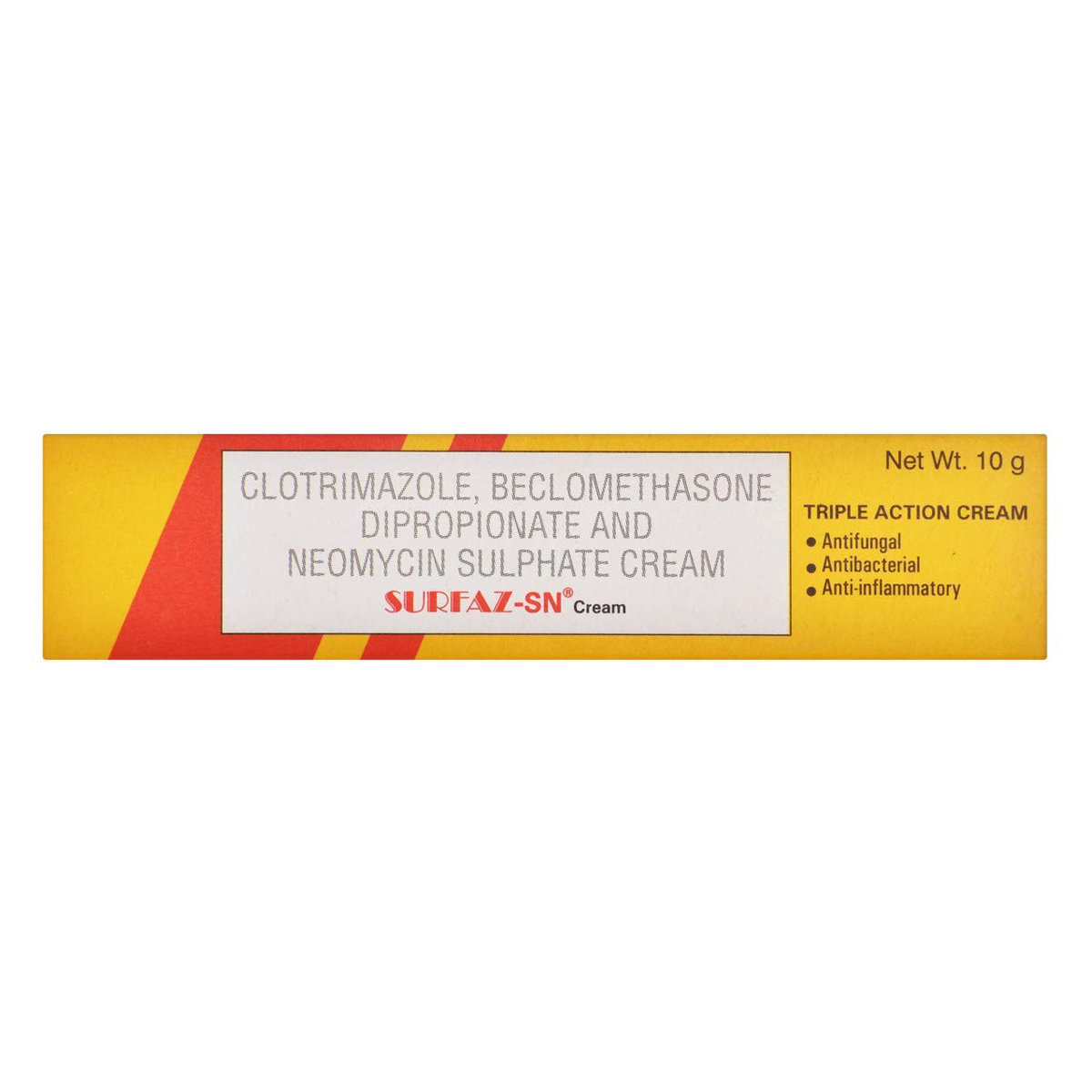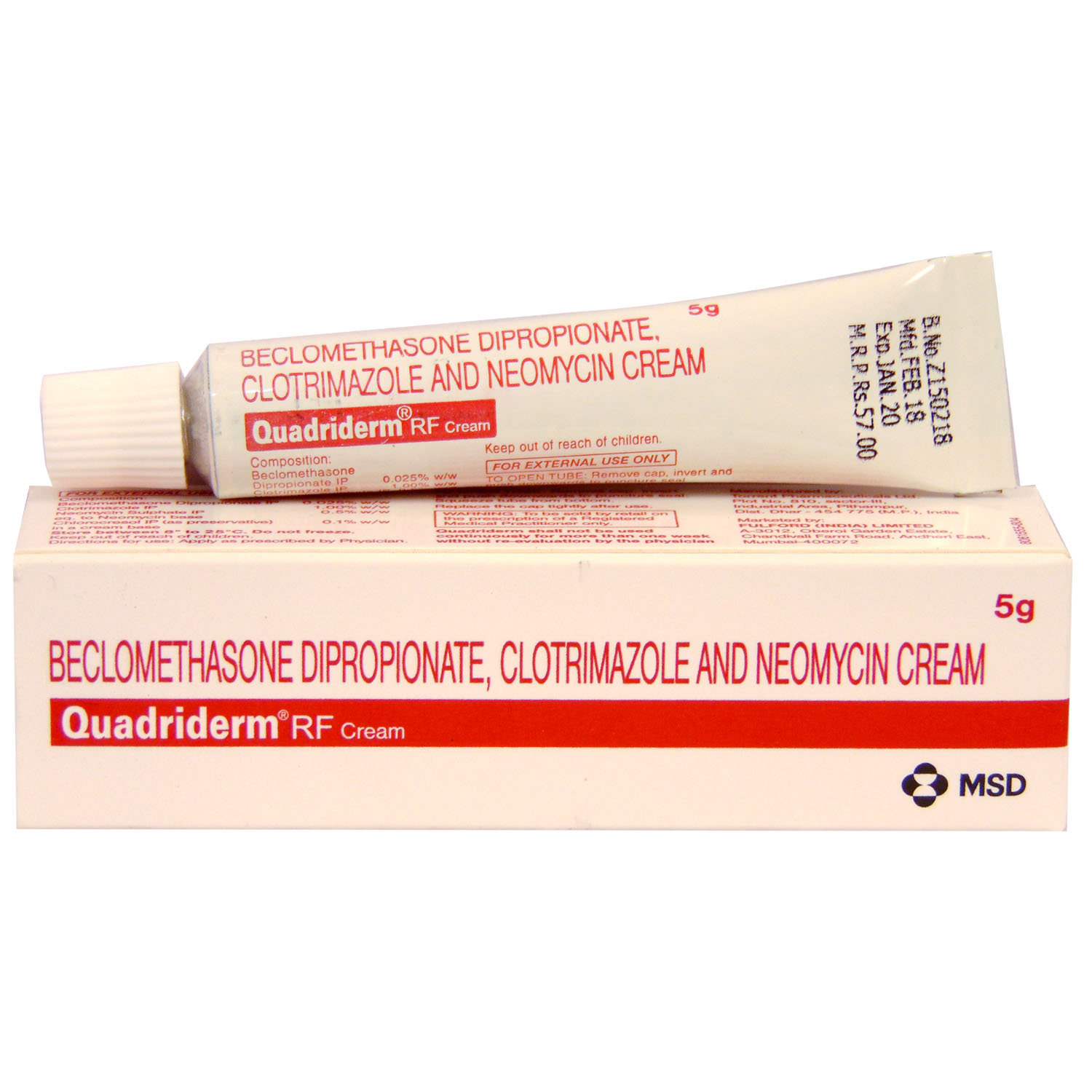Sigmaderm N Cream

MRP ₹112
(Inclusive of all Taxes)
₹16.8 Cashback (15%)
know your delivery time
Provide Delivery Location
Manufacturer/Marketer :
Consume Type :
Expires on or after :
Return Policy :

Secure Payment

Trusted by 8 Crore Indians

Genuine Products
Therapeutic Class
Country of origin
Manufacturer/Marketer address
Author Details
We provide you with authentic, trustworthy and relevant information
Disclaimer
Alcohol
Safe if prescribed
No interactions were found/ established. Please consult your doctor before using Sigmaderm N Cream.
Pregnancy
Consult your doctor
There is limited data on how the Sigmaderm N Cream affects pregnancy. Please consult your doctor if you are planning to become pregnant or are already pregnant before starting Sigmaderm N Cream.
Breast Feeding
Consult your doctor
Please consult your doctor before using Sigmaderm N Cream if you are breastfeeding. If you need to apply the cream or ointment on your breasts, don't do this shortly before giving a feed.
Driving
Safe if prescribed
Sigmaderm N Cream has no or negligible influence on the ability to drive or use machines.
Liver
Consult your doctor
Let your doctor know if you have any history of liver diseases or hepatic impairment before starting Sigmaderm N Cream.
Kidney
Consult your doctor
Let your doctor know if you have any history of kidney diseases before starting Sigmaderm N Cream.
Children
Safe if prescribed
Sigmaderm N Cream is recommended for children only with a doctor's advice.
Product Substitutes
About Sigmaderm N Cream
Sigmaderm N Cream is a combination of medicine primarily used to treat various fungal and bacterial skin infections. It treats skin inflammation due to allergies or irritants, eczema (inflamed, itchy, cracked and rough skin patches), psoriasis (skin cells multiply rapidly to form bumpy (uneven) red patches covered with white scales), ringworm, athlete’s foot (fungal infection between the toes), jock itch (fungal infection in the skin of the genitals, inner thighs and buttocks), insect bites, and stings. Bacterial infection occurs when harmful bacteria grow in the body and causes infection. Fungal infection is caused when a fungus invades and affects the tissue on the skin.
Sigmaderm N Cream is composed of three medicines: Clotrimazole (antifungal), Neomycin (antibiotic) and Betamethasone (steroid). Clotrimazole is an antifungal medication that stops the growth of fungi by causing damage and leakage to the fungal cell membrane. Neomycin is an aminoglycoside antibiotic used in treating bacterial and fungal infections of the skin. It prevents the synthesis of essential proteins required by bacteria to carry out vital functions. On the other hand, Betamethasone is a corticosteroid and blocks prostaglandin's production (chemical messengers) that make the affected area red, swollen and itchy.
Sigmaderm N Cream is for topical (for skin) use only. If the medicine gets into your eyes, nose or mouth, rinse with cold water. Common side effects of Sigmaderm N Cream include burning, irritation, itching and redness at the application site. These side effects do not require medical attention and gradually resolve over time. However, if the side effects are persistent, please consult your doctor.
Do not use topical Sigmaderm N Cream on open wounds, blisters and lesions. Sigmaderm N Cream is not for oral, ophthalmic (eye) or intravaginal use. Do not put a dressing or bandage on the affected area unless prescribed. Please check with your doctor before using Sigmaderm N Cream, if you have dehydration problems, cataracts or glaucoma, diabetes, gastrointestinal diseases, osteoporosis (weak and brittle bones), or muscle weakness, liver and kidney diseases. Pregnant and breastfeeding mothers should consult the doctor before starting Sigmaderm N Cream.
Uses of Sigmaderm N Cream
Medicinal Benefits Mweb
Key Benefits
Sigmaderm N Cream comprises of Clotrimazole, Neomycin, and Betamethasone. Clotrimazole is an antifungal medication that stops the growth of fungi by causing damage and leakage to the fungal cell membrane. Neomycin is an aminoglycoside antibiotic and treats bacterial and fungal infections of the skin. It prevents the synthesis of essential proteins required by bacteria to carry out vital functions and has broad-spectrum activity against aerobic Gram-positive and Gram-negative bacteria. Betamethasone is a corticosteroid and blocks prostaglandin's production (chemical messengers) that make the affected area red, swollen and itchy. With its anti-inflammatory and vasoconstrictive properties, Betamethasone treats eczema, psoriasis and dermatitis.
Directions for Use
Side Effects of Sigmaderm N Cream
- Burning
- Irritation
- Itching
- Redness at the application site
Drug Warnings
Before using Sigmaderm N Cream, let your doctor know if have a history of dehydration problems, cataract or glaucoma, diabetes, gastrointestinal diseases, osteoporosis (weak and brittle bones), muscle weakness, liver and kidney diseases or allergic reactions to steroid medicines and antibiotics. Avoid smoking or going near naked flames since Sigmaderm N Cream can catch fire and burn easily. Avoid applying Sigmaderm N Cream cream on sunburns, lesions, blisters and open wounds. Sigmaderm N Cream is not for oral, ophthalmic (for the eye) or intravaginal use. Do not wash the treated areas for a minimum of 3 hours after you apply Sigmaderm N Cream. Let your doctor know if you plan to become pregnant or are already pregnant and a lactating mother.
Drug-Drug Interactions
Drug-Drug Interactions
Login/Sign Up
Drug-Food Interactions
Drug-Food Interactions
Login/Sign Up
Drug-Diseases Interactions
Drug-Diseases Interactions
Login/Sign Up
Habit Forming
Special Advise
It is advised to reach out to your doctor if the bacterial/fungal infection symptoms persist or worsen after two weeks of treatment.
Diet & Lifestyle Advise
- Use mild soap while taking baths and prefer warm baths.
- Always wear loose-fitting clothes to avoid further sweat and the spread of the fungal infection.
- Regularly change your socks and wash your feet. Avoid shoes that make your feet sweaty and hot.
- Do not walk barefoot at places like gym showers to prevent fungal and bacterial infections.
- Do not scratch the affected area of the skin as it can spread the infection to other body parts.
- Avoid sharing towels, combs, bedsheets, shoes or socks with others.
- Wash your bed sheets and towels regularly.
- Avoid or limit the intake of alcohol and caffeine.
- Manage stress, eat healthily, drink plenty of water, exercise regularly and get plenty of sleep.
All Substitutes & Brand Comparisons
RX
Out of StockOstoderm G Cream
₹48
(₹2.16/ 1gm)
78% CHEAPERRX
Out of StockGerasil Skin Cream
₹64.9
(₹2.92/ 1gm)
71% CHEAPERRX
Out of StockCandidac BN Cream
Ikon Remedies Pvt Ltd
₹74.5
(₹4.47/ 1gm)
55% CHEAPER

Have a query?
Buy best Dermatology products by
Glenmark Pharmaceuticals Ltd
Sun Pharmaceutical Industries Ltd
Klm Laboratories Pvt Ltd
Cipla Ltd
Canixa Life Sciences Pvt Ltd
Abbott India Ltd
Ajanta Pharma Ltd
Intas Pharmaceuticals Ltd
Dr Reddy's Laboratories Ltd
East West Pharma India Pvt Ltd
Alkem Laboratories Ltd
Atopic laboratories Pvt Ltd
Hegde & Hegde Pharmaceutica Llp
Brinton Pharmaceuticals Ltd
Torrent Pharmaceuticals Ltd
Amwill Healthcare Pvt Ltd
Leeford Healthcare Ltd
Palsons Derma Pvt Ltd
Oaknet Healthcare Pvt Ltd
Med Manor Organics Pvt Ltd
Micro Labs Ltd
Dermocare Laboratories Gujarat Llp
Fixderma India Pvt Ltd
Apex Laboratories Pvt Ltd
Mankind Pharma Pvt Ltd
Ipca Laboratories Ltd
Yaher Pharma
Systopic Laboratories Pvt Ltd
Menarini India Pvt Ltd
Ethinext Pharma
Nemus Pharmaceuticals Pvt Ltd
Skinocean Pharmaceuticals
Dermacia Healthcare
Inex Medicaments Pvt Ltd
Lupin Ltd
GlaxoSmithKline Pharmaceuticals Ltd
Talent India Pvt Ltd
Zydus Cadila
Kivi Labs Ltd
Zydus Healthcare Ltd
Hbc Dermiza Healthcare Pvt Ltd
Mrhm Pharma Pvt Ltd
Regaliz Medicare Ltd
Sol Derma Pharmaceuticals Pvt Ltd
Newtrimed Healthcare Pvt Ltd
Wallace Pharmaceuticals Pvt Ltd
Eskon Pharma
Glowderma Lab Pvt Ltd
La Pristine Bioceuticals Pvt Ltd
Mohrish Pharmaceuticals Pvt Ltd
Percos India Pvt Ltd
Rockmed Pharma Pvt Ltd
Macleods Pharmaceuticals Ltd
Praise Pharma
Ethicare Remedies Pvt Ltd
Kaizen Drugs Pvt Ltd
Aurel Biolife
Rely On Pharmaceuticals
Wockhardt Ltd
Galcare Pharmaceuticals Pvt Ltd
Elder Pharmaceuticals Ltd
Indiabulls Pharmaceuticals Pvt Ltd
La Med Healthcare Pvt Ltd
Biocute Life Care
Yap Bioceuticals
Yash Pharma Laboratories Pvt Ltd
Zee Laboratories Ltd
Apple Therapeutics Pvt Ltd
Adonis Laboratories Pvt Ltd
Albatross Healthcare Pvt Ltd
Galderma India Pvt Ltd
Prism Life Sciences Ltd
FDC Ltd
Alniche Life Sciences Pvt Ltd
Salve Pharmaceuticals Pvt Ltd
West Coast Pharmaceuticals Pvt Ltd
Dermarex HealthCare India Pvt Ltd
Arka Vital Science Pvt Ltd
Dermajoint India
Gary Pharmaceuticals Pvt Ltd
Grace Derma Healthcare Pvt Ltd
Karlin Pharmaceuticals & Exports Pvt Ltd
Skinska Pharmaceutica Pvt Ltd
Uniza Healthcare Llp
Alembic Pharmaceuticals Ltd
Cadila Healthcare Ltd
Cadila Pharmaceuticals Ltd
Cosmofix Technovation Pvt Ltd
Human Pharmaceuticals
Indolands Pharma Pvt Ltd
Lyra Laboratories Pvt Ltd
Akumentis Healthcare Ltd
Entod Pharmaceuticals Ltd
Iceberg Health Care Pvt Ltd
Jenburkt Pharmaceuticals Ltd
P and P Dermaceuticals Pvt Ltd
Dabur India Ltd
Indchemie Health Specialities Pvt Ltd
Olcare Laboratories Pvt Ltd
Unison Pharmaceuticals Pvt Ltd
BODY CREAM
Body Lotion
Face Cream
Shampoo
Sun Screen
Face Gel
Soap
Face Wash
HAIR SOLUTION
Face Serum
BODY GEL
Hair Lotion
Hair Serum
Dusting Powder
ANTISEPTIC
FACE CLEANSER
Face Lotion
Body Wash
Body Spray
Eye Cream
FUNGAL INFECTION
Foot Cream
Conditioner
Eye Gel
Cleanser
Hair Cream
Hair Oil
Face Mask
Hair Gel
Sanitizer
Hair Spray
Moisturiser
Skin Ointment
Lip Balm
Capsule
Eye Serum
Intimate Wash
Specialty Supplements
Hand Cream
Facial Spray
SPECIALITY SUPPLEMENT
Face Toner
MEDICATED SHAMPOO
Tablet
Talcum Powder
BABY SUNSCREEN
Body Butter
Body Scrub
DIAPER RASH CREAM
EYE SOLUTION
FACIAL WIPE
Gargle
Hand Wash
Intimate Spray
Lip Serum
Lubricant Gel
MEDICATED CREAM
Nail Polish
VITAMIN D






